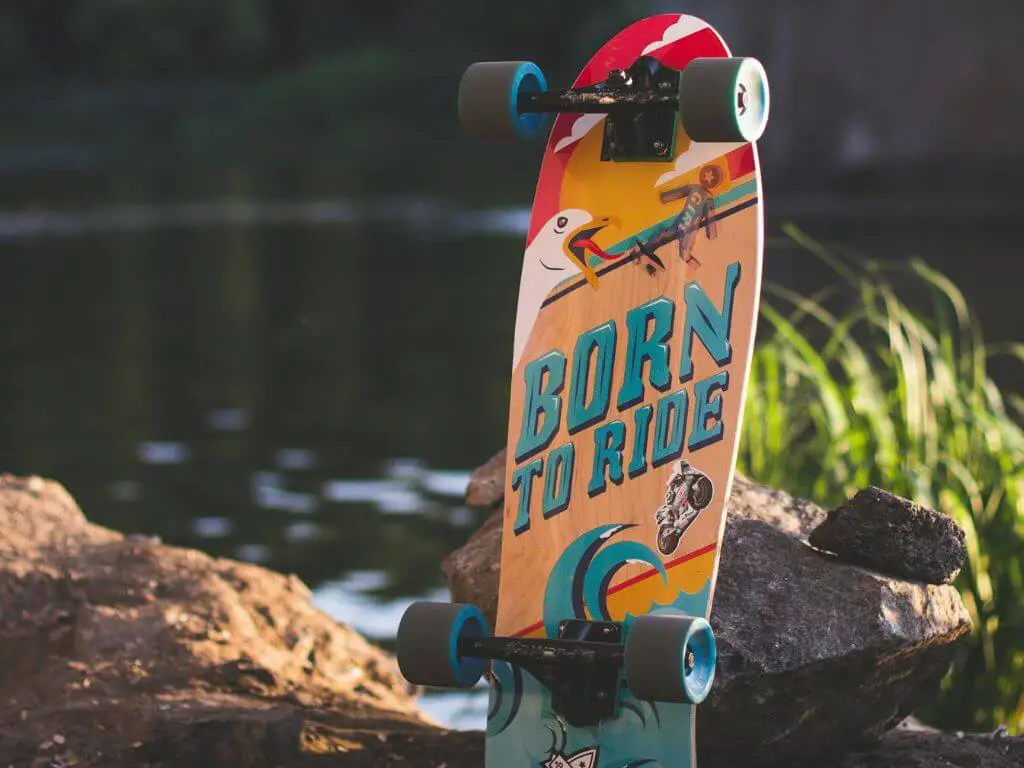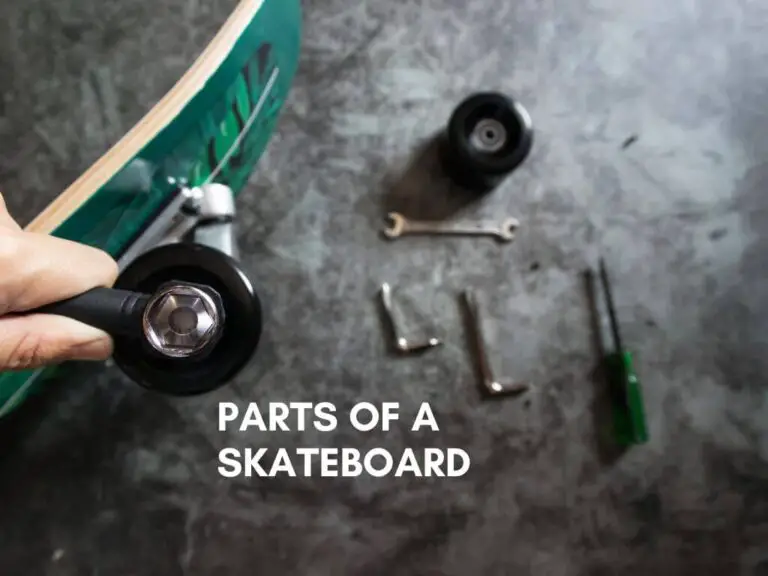Choosing the right skateboard size is crucial for both beginners and experienced skaters alike. The deck, trucks, wheels, bearings, grip tape, and hardware are essential parts that make up a skateboard and influence its suitability for different styles of skating . Whether you’re cruising the streets, practicing tricks, or simply enjoying a ride around town, understanding skateboard types—standard boards for street-style skateboarding, cruisers for a comfortable ride, and longboards for cruising, carving, and downhill riding—is a fundamental step in selecting the ideal board .
This comprehensive guide delves into the significance of skateboard dimensions, exploring how factors such as width, length, shoe size, body height, and weight affect the decision-making process. By integrating a skateboard size guide, the article aims to optimize for search engines, making it easier for readers seeking advice on what size skateboard to get. With insights on choosing between pre-built completes, which offer affordability and convenience for beginners, and custom completes that allow for a personalized skating experience, this guide ensures an informative, reader-engaging, and user-friendly approach to finding the perfect skateboard size .
Understanding Skateboard Sizes
Skateboard decks are typically measured in terms of length and width, with the width being a crucial factor in determining the right fit for a skater’s style and shoe size . The width of skateboard decks generally ranges from 7.5 to 8.5 inches, catering to various skating styles and body sizes . For those who engage in technical tricks like flip tricks and manuals, narrower boards ranging from 7.75 to 8.25 inches are often preferred because they allow for more precise control and easier handling .
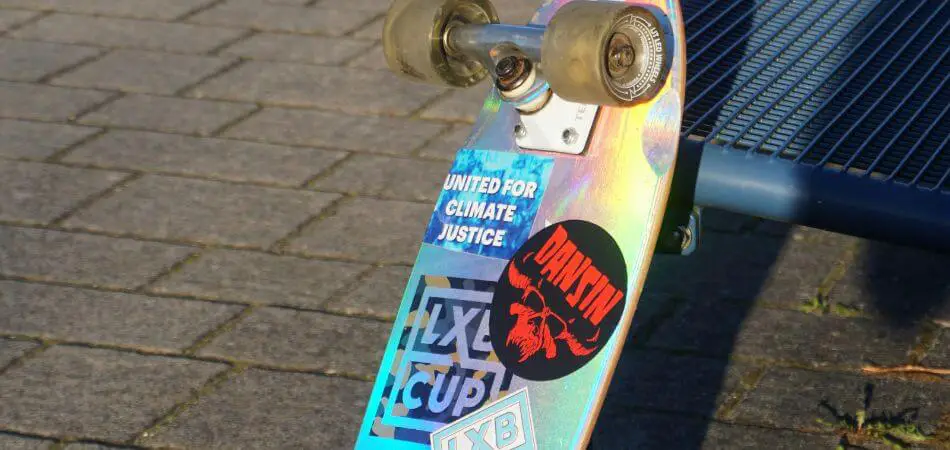
Skateboard Width Categories
- Narrow Decks (6.5-6.75 inches): Ideal for younger, smaller skaters who are just starting out and need a board that is easier to maneuver .
- Medium Width Decks (7.5-8.25 inches): These are versatile and suitable for street skating and performing tricks, providing a good balance between stability and agility .
- Wider Decks (8.25 inches and over): Preferred for pool, ramp, or transition skating and cruising, these decks offer greater stability, which helps in maintaining balance during more intense maneuvers .
Skateboard Length Considerations
The length of a skateboard also plays a significant role, especially for street skateboarding where boards typically range from 28 to 33 inches . Younger or shorter skaters might find that slightly shorter boards, which are easier to control and maneuver, enhance their skateboarding experience . However, for longboarding, the length of the board can have a more pronounced impact on performance, affecting speed and stability .
Deck Size Chart
To further aid in selecting the appropriate skateboard size, here is a breakdown based on age, shoe size, and height:
- 7 inches or less: Best for skaters under 6 years old, 3’5″ or shorter, with a US shoe size of 3-3.5 (men) or 4.5-5.0 (women) .
- 7.375 – 8.0 inches: Suitable for skaters aged 6 to 12 years, 3’5″ to 5’2″ in height, with a US shoe size of 4-6 (men) or 5.5-7.5 (women) .
- 8.0 – 8.25 inches: Recommended for skaters 13 years and older, over 5’3″ in height, with a US shoe size of 6.5-9 (men) or 8-10.5 (women) .
- 8.0+ inches: For adult skaters taller than 5’3″, with a US shoe size of 9.5 and above (men) or 11 and over (women) .
Selecting the right skateboard size is essential as it significantly affects the learning curve, overall maneuverability, and the enjoyment of the skating experience . By understanding these dimensions and how they correlate with personal attributes like shoe size and height, skaters can make more informed decisions that enhance their performance and enjoyment of the sport .
The Importance of Width in Skateboard Selection
Skateboard deck width is a pivotal aspect when selecting the right skateboard, impacting everything from the ease of doing tricks to the comfort of cruising . The choice of width should align closely with the skater’s shoe size and their preferred skating style to ensure optimal performance and enjoyment .
Skateboard Width Recommendations Based on Shoe Size and Skating Style
- Children (Shoe Sizes 4-6): A deck width of 7-7.5 inches is recommended, providing a balance between maneuverability and stability .
- Adults (Shoe Sizes 8-12): A deck width of 7.75-8.25 inches is ideal, suitable for a variety of skating styles from street to ramp .
- Adults (Shoe Size 12 and Up): Skaters can opt for wider decks based on personal preference, with widths typically ranging from 8.25 inches and above, especially for those engaging in pool, ramp, or transition skating .
Skateboard Width for Different Skating Disciplines
- Technical Tricks and Street Skating: Narrower boards (7.75 – 8.25 inches) are preferred for their agility and ease in performing flip tricks and other intricate maneuvers .
- Bowl and Transition Skating: Wider boards (8.25 – 9.0 inches) offer the stability needed for skating large bowls and performing big air tricks .
Optimal Deck Width for Stability and Control
- Young or Smaller Skaters: Starting with a smaller deck width, between 7.0″ to 7.5″, can make the learning process easier and more enjoyable .
- Larger Feet (Size 12 or Above): A wider deck, typically 7.75” or larger, provides the necessary room and comfort, enhancing control and stability .
Influence of Deck Width on Skateboarding Performance
- Street Skaters: Often prefer narrower decks for better trick execution and control during technical maneuvers .
- Pool, Vert, and Transition Skaters: Favor wider decks as they provide enhanced stability, crucial for maintaining balance at higher speeds and performing complex tricks .
Matching Deck Width with Truck Size
It’s essential for the truck width to correspond with the deck width to maintain proper balance and ensure smooth turns and tricks. A mismatch between deck and truck width can lead to suboptimal skateboarding performance :
- Narrow Decks: Should be paired with narrow trucks to enhance maneuverability .
- Wider Decks: Require wider trucks to support stability .
By carefully selecting a skateboard deck width that aligns with the skater’s shoe size, body size, and preferred skating style, skaters can significantly improve their performance and overall skateboarding experience . This tailored approach ensures both safety and enjoyment, making each skating session productive and fun.
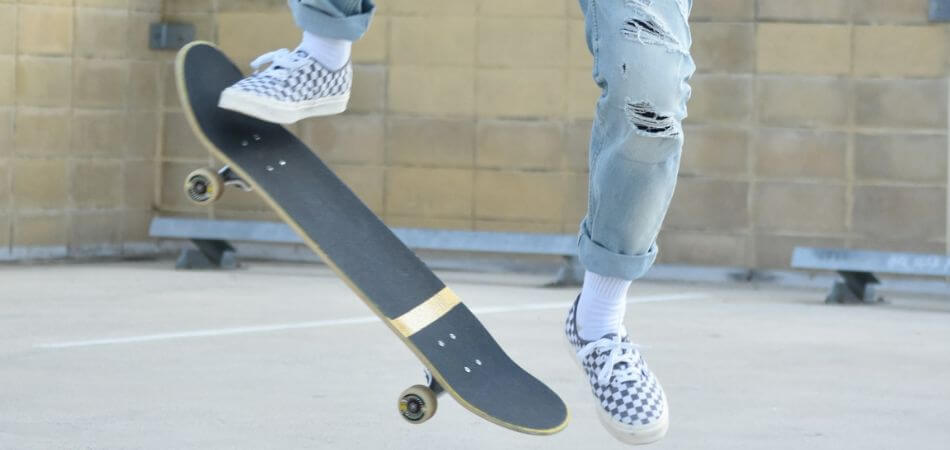
Choosing the Right Length
When selecting the appropriate skateboard length, it’s crucial to understand that while length may not drastically impact performance in street skateboarding, it plays a significant role in longboarding. Most street skateboards typically measure between 28 and 33 inches . Here’s a detailed look at how skateboard length varies with width:
- Width: 7.25″ corresponds to a Length: 29.50″ with a Wheel Base of 12.50″.
- Width: 7.50″ corresponds to a Length: 31.12″ with a Wheel Base of 14.00″.
- Width: 7.75″ corresponds to a Length: 31.12″ with a Wheel Base of 14.00″.
- Width: 8.00″ corresponds to a Length: 31.38″ with a Wheel Base of 14.00″.
- Width: 8.25″ corresponds to a Length: 32.00″ with a Wheel Base of 14.38″.
Skateboard Length Selection Based on Age, Height, and Shoe Size
To further align the skateboard length with the skater’s physical attributes and ensure a user-friendly experience, here is a breakdown based on age, height, and shoe size:
- For skaters under 6 years old, under 3’5″, with US shoe size 3-3.5 (men) or 4.5-5.0 (women):
- Recommended Length: 7 – 7.375 inches.
- For skaters between 6 and 12 years old, between 3’5″ and 5’2″, with US shoe size 4-6 (men) or 5.5-7.5 (women):
- Recommended Length: 7.375 – 8.0 inches.
- For skaters 13 years old and above, 5’3″ and over, with US shoe size 6.5-9 (men) or 8-10.5 (women):
- Recommended Length: 8.0 – 8.25 inches.
- For adult skaters, 5’3″ and over, with US shoe size 9.5 and over (men) or 11 and over (women):
- Recommended Length: 8.0+ inches.
By considering these dimensions, skaters can choose a skateboard that not only fits their body size but also enhances their skating experience, making each session both enjoyable and effective.
Skateboard Types and Their Sizes
Longboards
Longboards come in various styles, each designed for specific skating activities, making them a versatile choice for both beginners and experienced riders.
- Cruiser Boards: These are primarily designed for cruising and carving on the streets. Their design can be either top-mounted or drop-through, providing a comfortable and stable ride, ideal for beginners.
- Freestyle/Dancers: These longboards are equipped with double kicks which allow riders to perform flip tricks and engage in board dancing, adding a creative and athletic element to longboarding.
- Freeride/Downhill Longboards: Built for speed and durability, these boards are heavier and stiffer, which helps in preventing speed wobbles during high-speed descents.
- LDP (Long Distance Pumping): Specifically engineered for long distances, these boards are excellent for pumping and slalom, offering endurance and speed.
Shortboards
Shortboards are the traditional choice for street skateboarding, known for their agility and capability to perform tricks.
- Street Skateboards (Double Kick or Popsicle): These boards feature angled kicktails on both ends, perfect for popping curbs and executing a variety of tricks.
- Mini Cruiser Skateboards: Compact in size, these boards are great for commuting short distances while still being able to perform some tricks.
- Old School Skateboards: Characterized by their wider and flatter design compared to modern skateboards, these typically have a single kicktail and a less pronounced nose, suitable for a variety of skate styles.
- Surf Skates: These are designed with specialized truck systems to enable tight carving, mimicking the feeling of surfing on land. They are smaller and highly maneuverable.
Electric Skateboards
Electric skateboards provide a modern twist to traditional skateboarding, equipped with an electric motor controlled by a handheld remote. They are available in both longboard and shortboard variants, catering to different preferences and styles.
Skateboard Size Recommendations
Skateboard sizing can vary based on the style of skateboarding:
- Street Skateboarding: Skaters often prefer decks with smaller widths ranging from 7.75 to 8.5 inches for better control during flip tricks.
- Pool, Ramp, or Transition Skating: For these styles, wider decks measuring 8.25 inches and above are recommended for greater stability at higher speeds.
- Transportation: For everyday commuting, cruiser completes with softer wheels are advised for a smoother ride on various terrains.
Additional Resources
For those looking to delve deeper into the specifics of skateboard types and shapes, further information can be found in the article “Skateboard Types and Shapes”. This resource can help skaters make more informed decisions based on their individual needs and skating style.
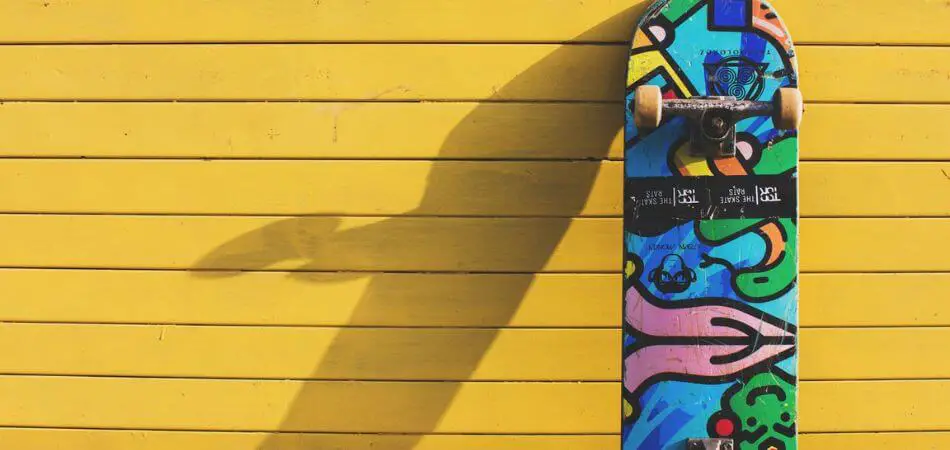
How Your Shoe Size Influences Skateboard Size
Understanding the relationship between shoe size and skateboard dimensions is crucial for selecting the right board. This section explores how different shoe sizes correspond to appropriate skateboard widths, ensuring a comfortable and effective skating experience.
Shoe Size and Skateboard Width Recommendations
- Shoe Size 6 to 9:
- Ideal Board Width: 7.5” – 8”
- These widths are perfect for individuals with smaller feet, providing the right balance between control and stability for various skating styles.
- Shoe Size 9.5 and Above:
- Ideal Board Width: 8” – 8.5”
- Skaters with larger feet benefit from slightly wider boards, which help in maintaining better control and stability during tricks and high-speed maneuvers.
- Shoe Size 12 or Larger:
- Ideal Board Width: 8.5” – 9”
- For those with very large feet, wider boards are necessary. They provide the required space and support needed for effective skating, especially in transition and ramp skating.
Detailed Deck Width Selection Based on Men’s Shoe Sizes
- Men’s Shoe Size 6.5 to 9:
- Recommended Deck Width: 7.5 to 8.0 inches
- These widths allow for optimal performance across various skating disciplines, ensuring agility and responsiveness.
- Men’s Shoe Size 9.5 or Larger:
- Recommended Deck Width: 8.0 to 8.5 inches
- Wider decks accommodate larger feet, enhancing comfort and control, particularly in technical skating or when performing complex tricks.
General Guidelines for Skateboard Deck Size Selection
- Influence of Shoe Size on Deck Size:
- It’s essential to choose a skateboard deck that matches your shoe size to optimize your ability to control the board and execute tricks effectively .
- Combined Impact of Height and Shoe Size:
- Both height and shoe size should be considered when selecting a skateboard, as they collectively influence the deck size that will offer the most comfort and performance.
- Comprehensive Factors Influencing Skateboard Size:
- The ideal skateboard size is determined by a combination of factors including the rider’s shoe size, body height and weight, as well as the preferred riding style and terrain. This holistic approach ensures a tailored skateboarding experience that enhances both safety and enjoyment.
By aligning skateboard size with shoe size, skaters can significantly improve their performance and enjoyment of the sport. This tailored approach ensures that each individual has the best possible setup for their unique needs.
Body Height and Weight Considerations
Selecting the right skateboard size based on body height and weight is essential for optimal performance and comfort. Here, we explore how these factors influence board size choices, ensuring that each skater can find a board that best suits their physical dimensions.
Basic Sizing Recommendations
- Mini Size (7.00″ to 7.50″): Ideal for skaters under 6 years old, who are 3’5″ or shorter, typically wearing a US shoe size of 3-3.5 for men or 4.5-5.0 for women.
- Small Size (7.375″ to 8.0″): Suitable for skaters aged 6 to 12 years, standing between 3’5″ to 5’2″ in height, with a US shoe size of 4-6 for men or 5.5-7.5 for women.
- Medium Size (8.0″ to 8.25″): Recommended for skaters 13 years and older, over 5’3″ in height, sporting a US shoe size of 6.5-9 for men or 8-10.5 for women.
- Large Size (8.0″ inches and up): Best for adult skaters who are 5’3″ or taller, with a US shoe size of 9.5 or larger for men, or 11 and over for women.
Height and Weight Influence on Board Size
- Taller or Heavier Skaters: Generally prefer wider boards (8.00″ to 8.50″ or larger) which provide better stability and balance, making them ideal for maintaining control during complex maneuvers.
- Shorter or Lighter Skaters: Often find that narrower boards (7.25″ to 7.75″) offer easier maneuverability, which can enhance their ability to perform tricks and navigate turns.
Detailed Board Size Recommendations Based on Height
- 4ft 6in or Shorter: A board size ranging from 7.25” to 7.75” is typically sufficient.
- 4ft 6in to 5ft 6in: A slightly larger board size of 7.75” to 8.00” is advisable.
- 5ft 6in or Taller: Opting for a board size of 8.00” to 8.50” is recommended to accommodate the increased height.
Weight-Specific Board Size Guidelines
- Micro (45 lbs and Under): A board width of 6.5” to 6.75” is generally adequate.
- Mini/Small (46 lbs to 59 lbs): A board width of 7.00″ to 7.50″ is suitable.
- Mid Size (60 lbs to 101 lbs): A board width of 7.50″ to 8.00″ is recommended.
- Full Size (102 lbs to 152 lbs): A board width of 8.00″ to 8.50″ should be considered.
- Full Size (153 lbs and Over): A board width of 8.50″ and up is advisable for optimal support and stability.
By understanding these height and weight considerations, skaters can make more informed decisions when selecting a skateboard, leading to a better skating experience that maximizes both safety and enjoyment.
Riding Style and Skateboard Size
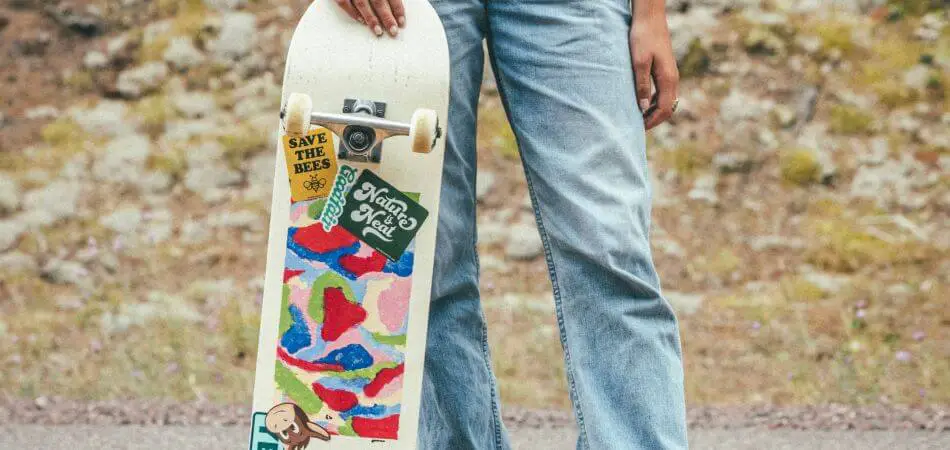
Skateboard Size Recommendations Based on Riding Style
Understanding the impact of riding style on skateboard size selection is crucial for both performance and comfort. Here, we explore how different styles of skating influence the choice of skateboard dimensions.
Street Skating and Technical Tricks
For those who enjoy street skating and performing technical tricks, maneuverability is key. A smaller deck, typically ranging from 7.5 to 8 inches, is recommended as it allows for easier handling and quicker turns, making it ideal for intricate maneuvers and tricks.
Vert Skating and Cruising
Conversely, vert skating or cruising demands a skateboard that offers more stability. In these cases, a larger deck, measuring 8 inches and above, is advisable. The increased surface area provides better balance and a smoother ride, which is beneficial when skating at higher speeds or on uneven surfaces.
Trying Out Different Sizes
It’s highly recommended to visit a local skate shop to try out different skateboard sizes. This hands-on approach allows individuals to feel the difference in maneuverability and stability offered by various deck sizes, ensuring they select the best fit for their specific skating style .
Beginner Recommendations
For a beginner who is 5’3″ tall, wears a women’s shoe size of 4, and is interested in learning tricks, starting with a 7.75-inch deck width would be optimal. This size provides a good balance between stability for learning and maneuverability for executing basic tricks.
Importance of Board Feel
Skateboard selection isn’t only about size; the feel of the board also plays a significant role. Different boards come with varying degrees of concave and flexibility, which can affect performance. Trying out a few different boards can help skaters find the one that best suits their style and comfort preferences.
Matching Trucks to Board Size
When purchasing a skateboard, it’s important to consider the size of the trucks. Smaller trucks are typically used for boards that are 8.0 inches wide and below, while larger trucks are necessary for wider boards. Properly matching the trucks to the board size ensures optimal performance and safety.
By considering these factors, skaters can make informed decisions that enhance their skating experience, tailored to their preferred styles and physical needs.
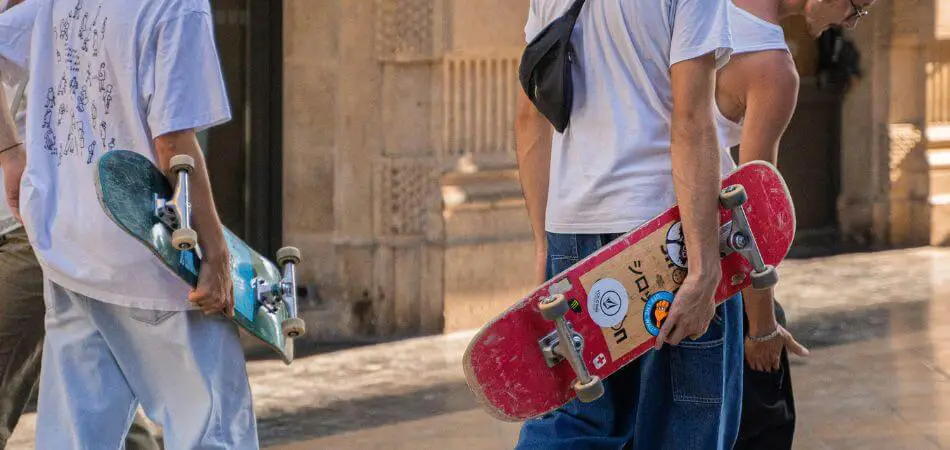
Pre-Built vs. Custom Skateboards
Pre-built skateboards offer the convenience of being ready to use right out of the box, making them a popular choice for beginners or those not committed to long-term skateboarding. They are generally more affordable, with prices ranging significantly depending on the brand and quality, from as low as $20 to over $300. However, these skateboards come with limited customization options in terms of design, components, and specifications, and being mass-produced, they might suffer from lower quality control.
On the other hand, custom skateboards allow skaters to select each component based on their specific preferences and skating style. This option caters to more experienced skaters or those with particular needs, such as a certain type of trucks, wheels, or deck size. Customizing a skateboard can be more costly, and assembling it requires a certain level of knowledge about skateboard parts and their assembly. The process of building a custom skateboard not only provides a personalized experience but also educates the skater about the functionality and importance of each component.
Comparison Table: Pre-Built vs. Custom Skateboards
| Feature | Pre-Built Skateboards | Custom Skateboards |
|---|---|---|
| Ready to Use | Yes, immediately after purchase | No, requires assembly |
| Cost | Less expensive | More expensive |
| Customization | Limited design and component options | High customization of parts and design |
| Quality Control | Possible lower due to mass production | Higher, depends on chosen components |
| Suitability | Beginners and casual skaters | Skaters with specific preferences |
| Learning Opportunity | Less, due to lack of assembly | Greater, through the assembly process |
This table helps illustrate the key differences between pre-built and custom skateboards, guiding potential buyers in making an informed decision based on their needs and experience level.
For those new to skateboarding, a pre-built skateboard might be the most straightforward and cost-effective option. It allows new skaters to start riding without the hassle of understanding and choosing between the myriad of available parts. Conversely, custom skateboards are ideal for those who have a clear idea of their skating style and prefer a board that perfectly fits their preferences, whether for street skating, ramp riding, or cruising.
Both types of skateboards are widely available, and one can find high-quality options from established brands known for their craftsmanship and attention to detail. It is also advisable for skaters to visit local skate shops to try different skateboard sizes and types to see what feels most comfortable and suits their skating style best.
Conclusion
Selecting the right skateboard size is a nuanced process that integrates various personal attributes such as shoe size, body height, weight, and preferred skating style, which ultimately influences both the learning curve and overall enjoyment of skateboarding. This guide has traversed the intricate pathways from the dimensions of decks, the significance of width and length, to the variety of skateboard types, equipping readers with comprehensive insights to make informed choices. With the skateboarding landscape being as diverse as the skaters themselves, understanding these factors ensures a tailored approach to selecting a skateboard, enhancing both performance and pleasure in the sport.
Moreover, the discussion extends beyond mere measurements, touching on the decision between pre-built and custom skateboards, thus catering to skaters at all experience levels—from newcomers seeking immediate entry into skateboarding with pre-built options to seasoned skaters aiming for a personalized setup with custom builds. The guide encourages skaters to engage actively with their skateboarding journey, suggesting a visit to local skate shops as an invaluable step for firsthand exploration of varied skateboard sizes and types. By providing this detailed exploration in an informative, reader-engaging, and user-friendly manner, the guide aims to empower skaters with the knowledge and confidence to choose the skateboard that best matches their individual aspirations and styles, paving the way for a fulfilling skateboarding experience.
FAQs
What is the appropriate skateboard size for my weight?
For those 45lbs and under, a Micro skateboard ranging from 6.5” to 6.75” is suitable.
If you weigh between 46 lbs and 59 lbs, a Mini or Small skateboard between 7.00″ and 7.50″ would be ideal.
Those weighing between 60 lbs and 101 lbs should opt for a Mid Size skateboard, which is between 7.50″ and 8.00″.
For individuals who are 102 lbs to 152 lbs, a Full Size skateboard of 8.00″ to 8.50″ is recommended.
Lastly, if you’re 153 lbs or over, choose a Full Size skateboard that is 8.50″ or larger.
What factors should I consider when selecting a skateboard size?
The style of riding and the terrain you will be using the skateboard on.
Your body height and weight.
The size of your shoes.
What guidelines should beginners follow when choosing a skateboard?
Beginners should select a skateboard based on age and height. For those under 10 years old or shorter than 5 feet, a Junior sized skateboard is recommended. If you’re over 10 years old or taller than 5 feet, a full-sized
How should an adult beginner go about choosing a skateboard?
Adult beginners should consider their body size and the type of skateboarding they plan to do. It’s also important to start with a skateboard that is not too advanced, to ensure ease of learning and safety. Opt for a full-sized skateboard as it provides better stability and space for your feet.

